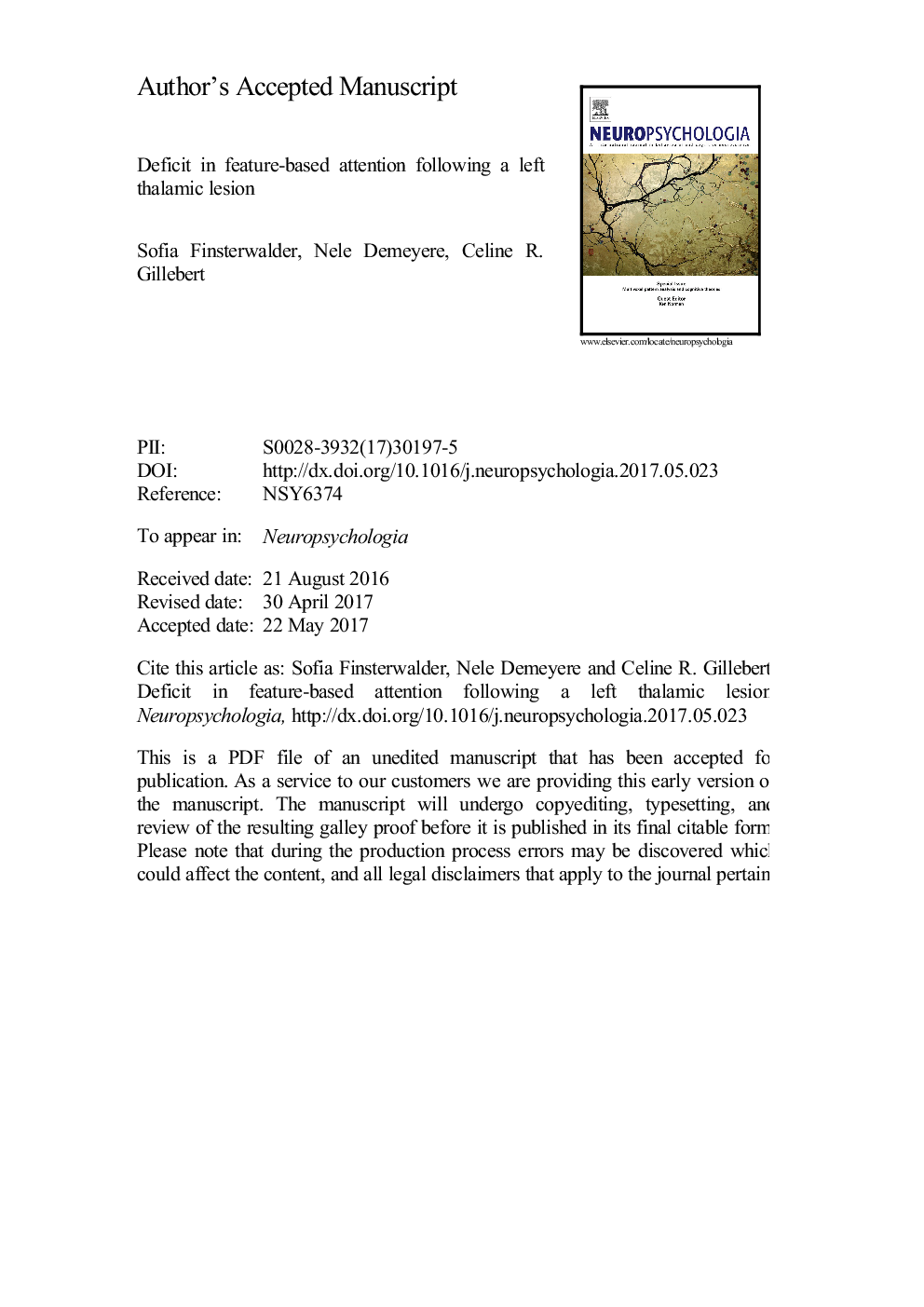ترجمه فارسی عنوان مقاله
نقص در توجه به ویژگی های پس از ضایعه تالام سمت چپ
عنوان انگلیسی
Deficit in feature-based attention following a left thalamic lesion
| کد مقاله | سال انتشار | تعداد صفحات مقاله انگلیسی |
|---|---|---|
| 123825 | 2017 | 35 صفحه PDF |
منبع

Publisher : Elsevier - Science Direct (الزویر - ساینس دایرکت)
Journal : Neuropsychologia, Volume 102, 28 July 2017, Pages 1-10
ترجمه کلمات کلیدی
توجه خاص سکته مغزی تالاموس، وزن توجه کنترل اندوژن،
کلمات کلیدی انگلیسی
Feature-based attention; Stroke; Thalamus; Attention weights; Endogenous control;

